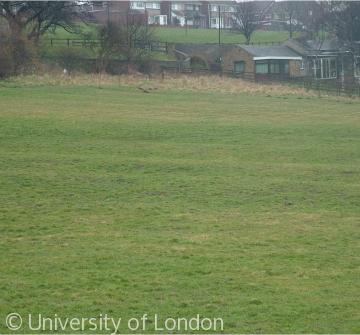Medieval Farming
 Ridge and furrow earthworks at Hylton Castle, Sunderland
Ridge and furrow earthworks at Hylton Castle, SunderlandPrior to the 16th century much of the country was subject to the manorial system, in which landowners held land (the manor) which they either worked directly (the demesne) or let to tenants, usually under restrictive forms of tenure (copyhold). Tenants sometimes worked on the demesne as well as on the land they held. This system never covered the whole country, but it reached a peak around 1200.
However, in the aftermath of the Black Death (1348-9 and subsequent revisitations through the 14th century) landowners found it increasingly difficult to discipline their tenants, who often departed for other manors. The system gradually fell apart with lords having to employ paid labour on their demesnes and the manor courts, which had exercised both tenurial functions and also civil jurisdiction, gradually losing their powers except for the transfer of title. Although copyhold tenure (‘copy of the court roll’, or tenancy admission document) remained widespread the farming system gradually moved in the direction of a stronger emphasis on straightforward money tenancies at market value (rack renting). The manorial system was not good for productivity, which generally remained low, and few farmers had much incentive to innovate when their landlord siphoned off much of the profit. The Nottinghamshire village of Laxton, near Newark, still retains its manor court and open fields, although it has had to adapt the farming system to modern needs.










